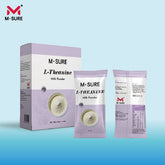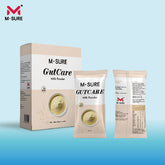Functions of L-theanine
by
BiotechAusway
27 May 2025
I. Neuromodulation and Mood Regulation
-
Stress Relief and Relaxation: Stimulates alpha brain wave production, increases dopamine and serotonin levels, reduces cortisol (stress hormone) concentrations, and alleviates anxiety.
-
Improved Sleep Quality: Enhances gamma-aminobutyric acid (GABA) release, shortens sleep latency, and deepens sleep.
-
Reduced Physical Fatigue: Modulates excitability in the central nervous system, alleviating fatigue caused by overexertion.
-
Neuroprotective Effects: Inhibits neuronal cell death induced by cerebral ischemia and delays neurodegenerative disorders like Alzheimer’s disease.
II. Cognitive Enhancement
-
Memory and Attention Improvement: Balances glutamate and GABA activity, enhancing brain cell vitality and information processing.
-
Synergy with Caffeine: Works synergistically with caffeine to boost alertness, reaction speed, and executive function while reducing caffeine-induced jitteriness.
III. Cardiovascular Health Support
-
Blood Pressure and Circulation Regulation: Inhibits angiotensin-converting enzyme (ACE) activity, promotes nitric oxide synthesis, dilates blood vessels, and improves cerebral/systemic blood flow.
-
Reduced Cardiovascular Disease Risk: Mitigates arteriosclerosis and thrombosis, supporting cardiovascular health.
IV. Immune System Enhancement
-
Immune Cell Activation: Boosts activity of T cells and natural killer (NK) cells, strengthening antiviral and anti-infective capabilities.
-
Disease Prevention: Long-term intake may lower risks of respiratory infections like influenza.
V. Antioxidant and Anti-inflammatory Effects
-
Free Radical Scavenging: Reduces oxidative stress damage to cells and DNA, delaying skin and organ aging.
-
Inflammation Suppression: Regulates immune responses by reducing inflammatory mediators and inflammatory cell infiltration.
VI. Additional Physiological Functions
-
Anti-fatigue and Anti-aging: Reduces oxidative damage and regulates metabolism to maintain vitality.
-
Anti-tumor Potential: Emerging studies suggest it may aid chemotherapy responses in cancer treatment.






